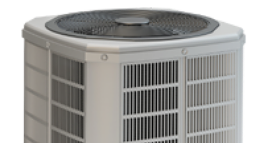What is Knob and Tube Wiring
Homes with Knob and Tube Wiring Can Complicate Real Estate Transactions
Older homes come with unique circumstances that can complicate estate transactions and make insurers skittish. One of the most common complications is the use of knob and tube wiring. If your client is interested in purchasing a home with this type of electrical system, here’s what they should know.
What exactly is this wiring system?
An early standardized electrical wiring method, knob and tube wiring was commonly used in the United States from about 1880 into the 1940s. The method gets its name from ceramic tubes that act as casings, and ceramic knobs used to fasten wires in place.
Unlike modern electrical installations which include three wires, knob and tube wiring consists of only two wires (a white neutral and a black hot). It does not include the ground wire to protect against shorts or excess charge. In turn, outlets will usually include two prongs instead of the three we see in modern homes. In some cases, electricians add ground fault circuit interrupters (GFCIs) to provide some three-prong outlets. While GFCIs are not grounded, they can interrupt the electrical current when needed.
Quick Facts
- Because it has no ground wire, knob and tube wiring cannot service any three-pronged appliances.
- While knob and tube wiring is considered obsolete, there is no universal code requiring its complete removal.
- The wiring is treated differently by jurisdiction, with some areas requiring removal from all accessible locations, and others simply forbidding it from new construction.
- While not inherently dangerous, knob and tube wiring usually becomes problematic due to improper modifications, general aging and instances where insulation envelopes wires.
- Due to safety concerns, most insurance companies refuse to issue policies for homes with knob and tube wiring.
Selling a Home with Knob and Tube Wiring
Despite the advent of modern wiring techniques, many professionals continued using the knob and tube method throughout the 1950s, ‘60s and even ’70s. This relatively late use of the method leaves many homeowners and home buyers surprised to learn it exists in houses that are only 40 or 50 years old. In fact, when many homeowners look to upgrade or renovate their electrical systems, they are often surprised to discover “hidden” knob and tube wiring.
From a home buyer’s point of view, knob and tube wiring creates a serious problem. Since most insurance providers refuse to cover houses that have knob-and-tube wiring, buyers can have difficulty acquiring mortgages. From a seller’s point of view, things can be even worse. It can cost thousands of dollars to effectively rewire a home, and many homeowners have difficulty recouping these costs after a sale. Still, insurers do make occasional exceptions for houses where an electrical contractor has deemed the system safe.
If your clients are attempting to buy or sell a home with knob and tube wiring, have the system evaluated by a qualified electrician. Collect documentation that proves the system was installed and modified correctly. If the system does pose hazards, prospective home buyers should get an estimate of the cost of rewiring. They can then use this information to negotiate a cheaper price for the home.
This article is brought to you by 2-10 HBW, America’s leading provider of home warranty services. Find out more at www.2-10.com today!








